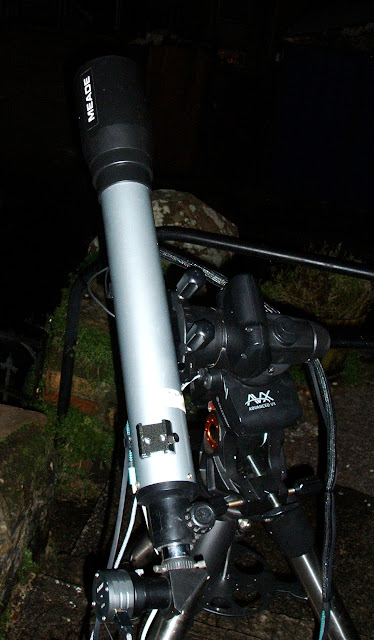An SVBONY SV705C OSC camera, fitted with an IR/UV cut filter was placed at the focus of an old Meade RB-70, f/10, doublet refractor which was mounted on a Celestron AVX GOTO mount.
The AVX mount was placed on marks on the ground which quickly gives quite a good polar alignment if care is taken with the placement of the tripod feet.
An SV705C OSC uncooled CMOS camera fitted with a UV/IR cut filter was placed at the focus of the scope. The mount was controlled by AstroDMx Capture via an INDIGO client and server running on the imaging computer indoors.
Click on any image to get a closer view.
AstroDMx Capture was used to send the mount to Vega which was used to focus the scope accurately using a Bahtinov mask.
The equipment used
Once the scope was focused, AstroDMx Capture was used to send the scope/mount to the Moon.
The imaging computer and the tablet computer can both be seen displaying the Lunar preview.
AstroDMx Capture capturing Lunar data
A 1500-frame SER file was captured of the 49.5% waxing Moon. The best 80% of the frames in the SER file were stacked in Autostakkert! The resulting image was wavelet processed in waveSharp, post processed and re-oriented in the Gimp 2.10.
Slightly chroma/saturation enhanced image of the Moon
The slight enhancement helps to reveal the mineralogical variation of the Moon's surface.Normal, unsaturated image of the Moon
The use of a tablet computer running a VNC client/viewer enables the manual focusing of a telescope when the imaging computer is not outside by the scope. The Bahtinov mask focusing on a bright star is much better than trying to judge focus with the telescope pointing at the Moon. This gives optimal focus for imaging the Moon and also planets.






